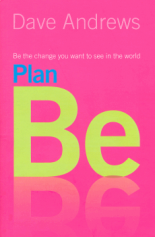Future Shape Of Sacred Communities? 2
Dave Andrews
Another factor that will shape sacred communities in the future is Provocation
I was taught the key to understanding a sacred community was the Greek word ‘ecclesia’, which we translate into English as the word ‘church’. This is the word used by Jesus when he said, in Matt 16v18,‘I tell you that I will build my church, and the gates of hell will not prevail against it!’
I was taught the word ‘ecclesia’ meant ‘called out’. So the ‘sacred community’ was ‘those called out of the wider society’, ‘apart from the wider society’, ‘to stand for the truth against the false values of the wider society’, ‘in the hope that even the forces of hell itself would not prevail against it’.
Note that this definition of the sacred community is essentially separate. It sees the sacred community as
Not only – apart from the wider society
But also – over against the wider society.
It is this separate idea of church that still affects the way many of us see the place of the sacred community in the wider society –
at respectable distance from the wider society.
So churches contribute to the wider society through
congregational activities
and denominational agencies.
However, when Jesus first used the word ‘ecclesia’, it was not a religious term, it was a political term. It referred to a ‘community council’, people in a locality who were ‘called aside’ for a while, to consider how to promote the welfare of their locality. The ‘sacred community’ was never intended to be ‘those who were called out of the wider society’. The ‘sacred community’ was called to be ‘in it’ – but ‘not of it’. Not ‘apart from the wider society’- but ‘a part of the wider society’ – ‘promoting the welfare of the wider society.’ Not fighting ‘against flesh and blood’ – but against ‘principalities and powers’ in the wider society that oppress people.
Note this definition of a sacred community is essentially connected.
It sees a sacred community as
a part of the wider society
working for the welfare of the wider society
To connect with the wider society sacred communities
need to move from bonding to bridging.[1]
Bonds are strong inward-looking connections, like marriage, that of necessity are exclusive. Bonds produce deep, ‘thick’ trust’, and are essential for nurturing and supporting one another, for ‘getting by’. Churches, with our emphasis on family, have tended to do bonding pretty well.
Bridges are weak outward-looking connections, like the civil rights movement that of necessity are inclusive. Bridges produce broad, ‘thin trust’, and are crucial for co-operating and campaigning with others – for ‘getting on’. Churches, with our suspicion of others, who are not considered to be brothers or sisters in the family of faith, have tended not to do bridging very well.
For sacred communities to fulfill the role they are called to in the wider society they will need to build bridges across the broad spectrum of people, groups organisations, denominations and religions in the wider society.
There are two time-honoured ways that we can build bridges to ‘others’ in the community that the Jews refer to in Yiddish as ‘schmoozing’ and ‘maching’.[2]
‘Schmoozing’ is an informal approach to building bridges. ‘Schmoozers’ like to visit family, drop in on friends, invite newcomers over for a barbecue, or take old-timers out on a picnic.
‘Maching’ is a more formal approach to building bridges. ‘Machers’ are more likely to attend a workshop on community, start a community group, and implement a community project.
For sacred communities to fulfill the role they are called to in society, they need to be:
- ‘In it’ – ‘schmoozing’ and ‘maching’ – but ‘not of it’.
- Not ‘apart from the society” – but ‘a part of the wider society’- ‘promoting the welfare of the wider society.’
- Not fighting ‘against flesh and blood’ – but against ‘principalities and powers’ in the wider society that oppress people.
As I said before I describe the intentional community I am part of as ‘a network of residents, working towards community in our locality with all people – particularly the most marginalized and disadvantaged people in our area – in a way that reflects the radical, sacrificial, nonviolent compassion of Christ.’
We do not define ourselves as a community apart from our locality, but affirm the fact we are residents, who are a part of the locality, working towards community with all people, especially those concerned for love and justice.
[1] R. Putnam Bowling Alone p361-362
[2] R. Putnam Bowling Alone p92-94



